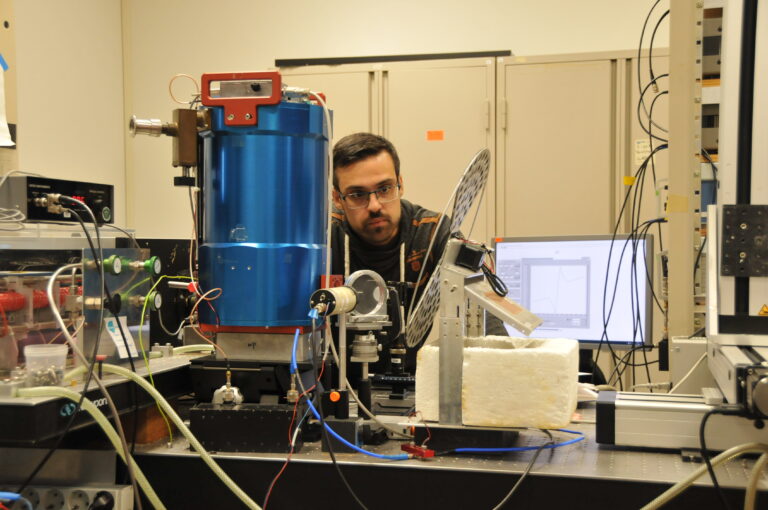Researchers at SRON and TU Delft have made bolometer detectors thirty percent more sensitive. Bolometers form the heart of terahertz spectrometers that can distinguish colors up to one-millionth of their wavelength. This is needed to observe astrophysical processes such as the birth of stars and planets from gas and dust clouds. The enhancement should cut the time in half that it takes a space telescope to take a spectrum.
Hot Electron Bolometers
Hot Electron Bolometers (HEBs) convert incoming terahertz signals from the Universe into gigahertz signals. Those are more easily recorded by spectrometers. In their forming stages, stars and planets mostly emit terahertz radiation. So in order to understand what happens there, astronomers have to capture spectra at those frequencies.
HEBs have already been successfully applied by SRON in various terahertz stratospheric and space telescopes, including ESA’s Herschel space observatory and NASA’s GUSTO balloon telescope. The Earth’s atmosphere blocks terahertz radiation, so it can only be observed at high altitude or from space.
unprecedented high sensitivity
A team from SRON and TU Delft has now demonstrated an unprecedented high sensitivity at 1.6 and 2.5 terahertz. They introduced several design improvements, with the most notable innovation being the addition of a thick gold antenna. At SRON, Jose Silva, Willem-Jan Vreeling and Wouter Laauwen conducted measurements and data analysis, while Behnam Mirzaei and Dingding Ren at TU Delft handled the design, simulation, and fabrication of the detectors. This team is led by Jian-Rong Gao.
future space missions
‘The new HEBs were initially intended for the proposed NASA space missions OASIS and SALTUS,’ says Gao. ‘But those were not selected. Nevertheless, I expect the higher sensitivity to impact future space missions where high sensitivity and efficient data collection are crucial. By halving the integration time, we enable scientists to gather more data in shorter time frames, reducing mission costs and expanding the potential for groundbreaking discoveries.’
The results of this study have been published in IEEE Transactions on Terahertz Science and Technology.



